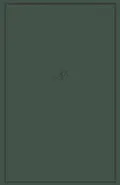Separation Methods in Organic Chemistry and Biochemistry aims to provide perspectives for the commonly used separations methods and to discuss indications for their use. The book discusses the determination of molecular properties useful in separation based on micro test methods, paper chromatography, thin-layer chromatography, and electrophoresis. The text then describes the theoretical principles of group-separation procedures, liquid-liquid partition, ion-exchange selectivity, gel permeation, and adsorption. Methods of influencing the selectivity coefficients, the basic theory of fractionation methods, and the principles of application are also encompassed. Biochemists and chemists will find the book useful.
Inhalt
Preface
Introduction
I. Types of Separation Considered
II. Distribution Coefficient
III. Use of Micro Methods
IV. Evaluation of Separation Processes
I. General Principles
I. Stability
II. Group Separations
III. Fractionation Separations
References
II. Determination of Molecular Properties
I. Introduction
II. Chromatographie Procedures
III. Micro Tests
References
III. Solvent Extraction
I. Partition Ratio
II. Application of Solvent Extraction for Group Separation
III. Application of Solvent Extraction for Fractionation Separation
IV. Partition Chromatography
V. Countercurrent Distribution
References
IV. Gel Filtration and Gel-Permeation Chromatography
I. Mechanism
II. Substances Used for Gel Separations
III. Column Performance
IV. Factors Influencing Kd
V. Applications of Gel Filtration
VI. Applications of Gel-Permeation Chromatography
References
V. Ion Exchange
I. General Discussion
II. Ion Exchange Applications
References
VI. Adsorption Processes
I. General Principles
II. Application of Adsorption Procedures
References
Appendix I. Dielectric Constants of Some Common Solvents (at 25°C)
Appendix II. Ion Exchange Resins
Appendix III. General Thin-Layer and Paper Chromatographie Techniques
Appendix IV. Conversion Table for Rf and Rm
Author Index
Subject Index
